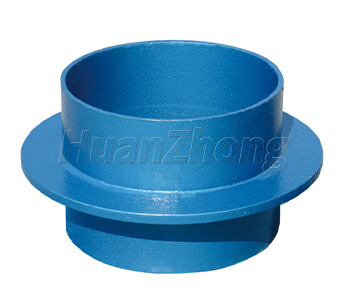Characteristics of rigid waterproof casing, commonly used in basements
Basement rigid waterproof casing is used to pass through the wall where the structure is subject to vibration or has a strict waterproofing requirements of the pipe. In order to protect buildings and structures from vibrations or the weight of objects with strict leakage prevention, casing can be buried in the wall. Rigid waterproof casing in the normal work of the pipe to be connected to use. Basement rigid waterproof casing mainly has wing ring (steel pipe or steel plate), ring (steel pipe), casing, sealing ring and other components. Before use, the pipe should be flushed clean and checked for defects such as cracks, breakage, water seepage and air leakage.
According to the installation requirements of the basement waterproof casing, the two ends of the flexible waterproof casing and the wing ring are connected by bolts. After connection, screw the flexible waterproof casing into the wing ring and tighten the bolts at both ends. After the installation is completed, the quality of the casing should be checked and the bolts should be tightened. Install according to the quality requirements. If required, welded joints can be used. The joint uses a welded connection. The casing can be installed as required. It must be pre-treated before use. Set up the expansion type rigid waterproof casing according to the requirements of the design drawings (for buildings where the pipeline penetrates the wall subject to vibration or where there are strict waterproofing requirements.
Install two bolts set on the wing ring respectively downward at the outer edge of each wing ring end, and set a ring sleeve and casing fixing screw matching the wing ring and bolts on the casing. When the horizontal pipe is bent, the bolt set on the wing ring can produce expansion through the pipe to compensate for the expansion of the pipe or reduce the displacement caused by vibration when vibration occurs. If the diameter of the fixed bolt is larger, the ring sleeve can be used to add bolts and set on the bolt while installing two washers to compensate for the displacement caused by axial pressure when the pipe is bent. Flexible waterproof casing can be divided into rigid waterproof casing and flexible waterproof casing according to the use of different environments and pipeline location; there are some pipeline installation requirements are higher when you can choose flexible waterproof casing; some pipeline installation requirements are lower when you can also choose flexible waterproof casing; there are pipeline installation requirements are higher when you must choose casing.

